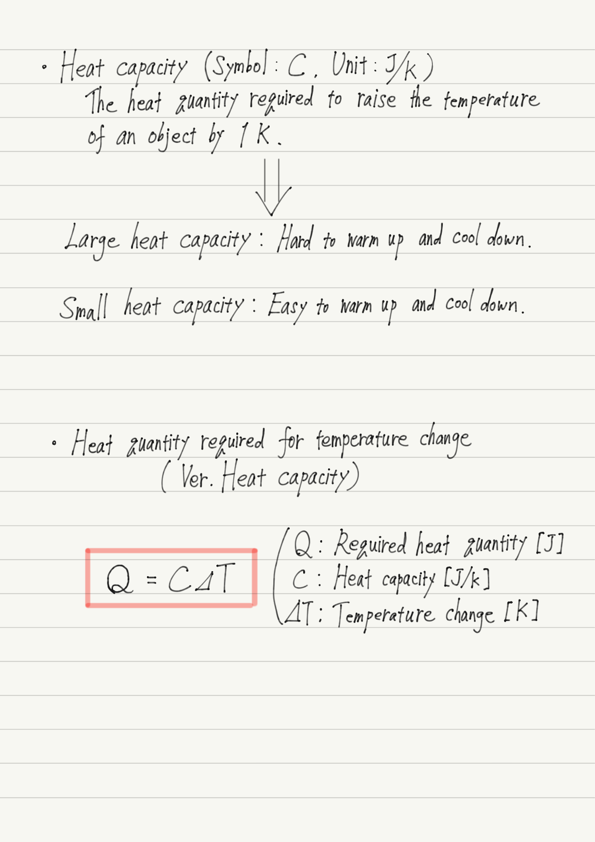Heat Capacity
When you go to an outdoor swimming pool in mid-summer, the water is cold but the poolside is very hot.
Have you ever had such an experience?
Both should be exposed to the same sunlight, but some get hotter and some stay cold.
From this we can see that some objects warm easily and others do not.
Definition of heat capacity
Many of you have probably never heard of the term heat capacity, which is also the title of this lecture.
Heat capacity is “the heat quantity required to raise the temperature of that object by 1 K”.
Let us illustrate with concrete figures.
Suppose we have an object A with a heat capacity of 100 J/K and an object B with a heat capacity of 1000 J/K.
Then, from the definition of heat capacity,
Object A → 100 J must be added to raise the temperature by 1 K,
Object B → 1000 J must be added to raise the temperature by 1 K.
Which object is harder to warm up, object A or B?
Difficulty in warming and heat capacity
Of course, it’s object B that’s hard to warm up!
This is because adding 100 J of heat to A raises its temperature by 1 K, whereas it takes 10 times that amount, 1000 J, to raise B’s temperature by 1 K.
Now you know what heat capacity means, don’t you?
Yes, the heat capacity is a numerical expression of the difference in heat resistance of each object!
It can be said that the larger the heat capacity, the harder it is to warm up, and the smaller the heat capacity, the easier it is to warm up.
Conversely, to lower the temperature of an object with a heat capacity of 100 J/K by 1 K, 100 J of heat must be removed, so an object with a large heat capacity is both harder to warm and harder to cool.
Heat and temperature change
Q. Find the heat quantity required to raise the temperature of an object with a heat capacity of 100 J/K by 20 K.
This is a question that can be solved if you know what heat capacity means.
Please read the rest of the article after you get the answer.
Answer. Since the amount of heat required to raise the temperature by 1 K is 100 J, if we want to raise the temperature by 20 K, we just add 100 J for 20 times, right?
Thus 100 ✕ 20 = 2000 J.
This formula is summarized below.
Summary of this lecture
Next Time
There is more to the story of the difficulty of warming objects.


